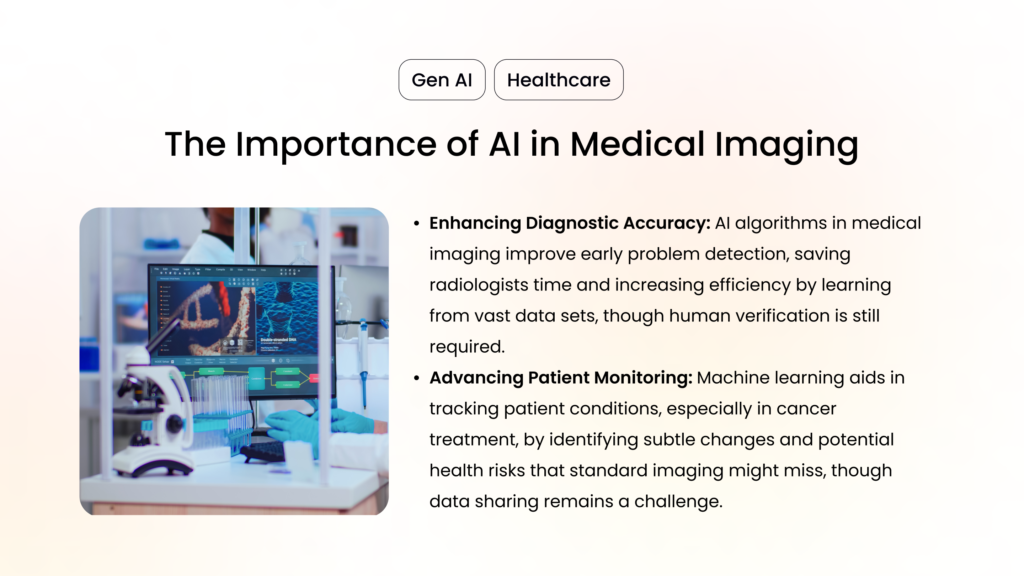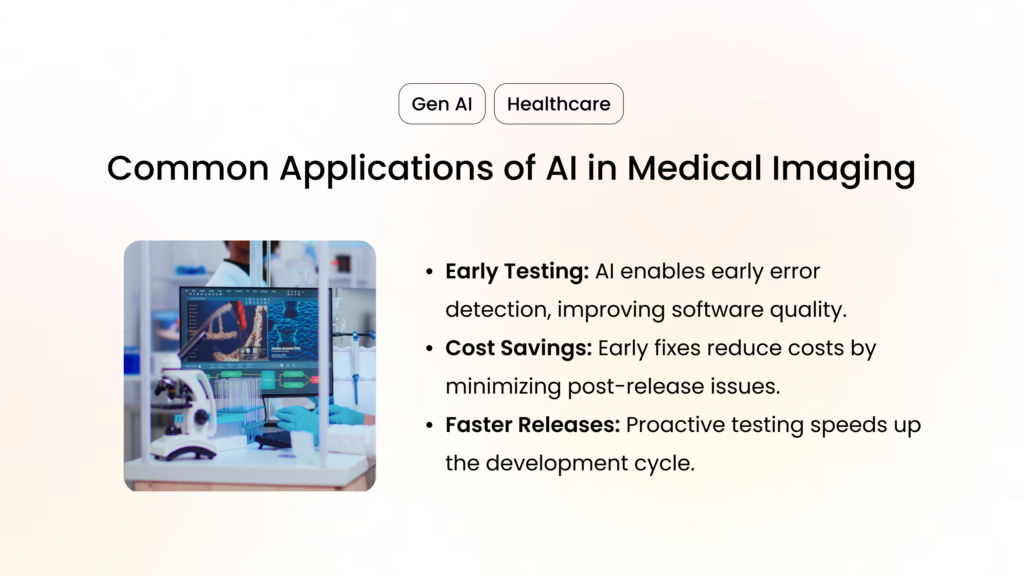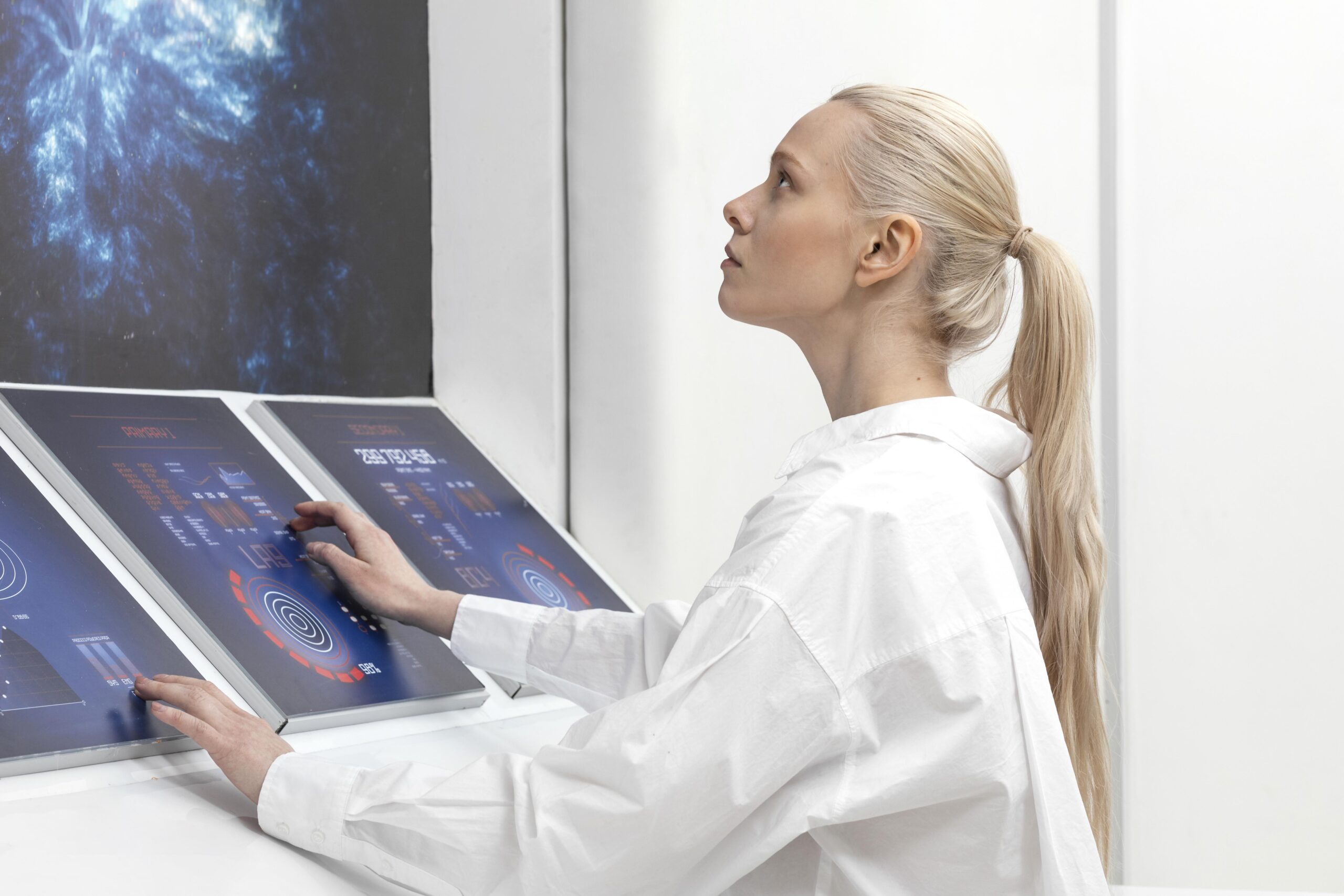The notion that doctors could view the inside of the human body without a single incision once seemed miraculous. Over the years, radiology has made remarkable progress, and recent advancements in artificial intelligence (AI) are pushing these boundaries even further.
By leveraging the power of AI and machine learning, medical professionals can now analyze body scans with unmatched precision, identifying anomalies that even a trained eye might miss.
Imaging in medicine has progressed from merely capturing high-resolution pictures of the body to sophisticated analyses of every data point, distinguishing disease from health and signal from noise. While the early decades of radiology focused on refining image quality, the next phase emphasizes interpreting this data to ensure no detail is overlooked.
Moreover, imaging’s role is expanding from merely diagnosing medical conditions to becoming integral to treatment, particularly in oncology. Doctors increasingly rely on imaging to monitor tumors and track the spread of cancer cells, providing a faster and more accurate assessment of therapeutic efficacy. This shift will revolutionize patient treatment options and enable physicians to make more informed decisions.
“In the next five years, we will see functional imaging become part of care,” says Dr. Basak Dogan, associate professor of radiology at the University of Texas Southwestern Medical Center. “We don’t see the current standard imaging answering the real clinical questions. But functional techniques will be the answer for patients who want higher precision in their care so they can make better-informed decisions.”
The Importance of AI in Medical Imaging

Detecting Problems Earlier
The key challenge is automating their interpretation to fully utilize medical imaging technologies such as X-rays, CT scans, MRI, and ultrasounds. This automation is crucial for saving radiologists time and increasing efficiency.
Through the collaboration between software developers and radiologists, computer-aided algorithms have been designed to identify abnormalities by learning from tens of thousands of images. The more data these algorithms process, the more accurately they can distinguish between normal and abnormal findings.
The U.S. Food and Drug Administration (FDA) requires these algorithms to be 80% to 90% accurate for approval. Until now, approximately 420 algorithms, mostly for cancer detection, have been approved so far. Although a human still needs to verify the algorithm’s results, these technologies are essential for promptly highlighting potential issues, thus speeding up patient diagnosis.
Tracking Patients More Thoroughly
While computer-assisted triaging is the initial step in incorporating AI support into medicine, machine learning is also becoming crucial for patient monitoring and detecting minor changes in their conditions. This is particularly important in cancer treatment, where accurately assessing tumor changes is vital for evaluating treatment efficacy.
Dr.Dogan also points out that standard imaging methods often can’t detect changes until midway through chemotherapy, which can take months. Early tumor changes during chemotherapy involve immune cell interactions rather than cell death, and tumors may not shrink uniformly, resulting in a patchy appearance.
This makes it challenging for standard imaging to determine the extent of live versus dead tumor cells. Currently, breast cancer imaging methods like mammography and ultrasound are focused on detecting anatomical features.
Spotting the Unseen Abnormalities
With sufficient data and images, AI algorithms could identify abnormalities for various conditions that humans can’t detect, says Dreyer. His team is developing an algorithm to measure biomarkers, both anatomical and functional, to predict potential health issues like strokes or heart attacks.
This advancement in imaging could transform healthcare but requires vast amounts of data from many patients. The fragmented healthcare system in the U.S. complicates data pooling, but federated learning, which applies algorithms to anonymized patient data across institutions while preserving privacy, offers a potential solution.
An Example of AI in Medical Imaging Advancement
Artificial intelligence (AI) is revolutionizing medical imaging by enhancing the interpretation of medical scans without the need for contrast agents.
Researchers at the University of Oxford have developed an AI-powered algorithm called “virtual native enhancement” (VNE). It combines multiple contrast-free MRI images with heart motion information to produce clear images of heart muscle scarring. This technology has been successfully used to detect scars in patients with hypertrophic cardiomyopathy and those who have had a heart attack.
VNE not only eliminates the need for contrast agents, which can cause complications in some patients but also provides equally accurate results. This advancement could pave the way for safer and more efficient cardiac imaging practices.
Common Applications of AI in Medical Imaging

AI-Driven X-ray Imaging
AI algorithms analyze X-ray images to detect fractures, anatomical anomalies, abnormalities, and other medical conditions or diseases. By automating X-ray interpretation, these medical imaging systems assist radiologists in making quicker, more accurate diagnoses and developing more effective treatment plans.
AI in MRI Imaging
MRI imaging technology is crucial for diagnosing various medical conditions, including nerve issues and musculoskeletal abnormalities or injuries. When AI algorithms are combined with MRI imaging, they can identify subtle changes or abnormalities in the images that a human might overlook.
AI also improves radiology by enhancing image quality, shortening scan times, and aiding in the detection of small lesions or tumors.
AI in CT Scans
AI-enhanced CT imaging technology assists technologists in numerous ways. By providing advanced image reconstruction, it helps to produce clearer and more accurate images. This improvement in image quality enhances the visualization of anatomical structures, making it easier to identify abnormalities.
Additionally, the technology supports early detection and intervention, allowing healthcare professionals to diagnose and treat conditions at an earlier stage, which can lead to better patient outcomes. Overall, AI-enhanced CT imaging is a significant advancement in medical imaging, contributing to more effective and efficient patient care.
Challenges and Risks of AI in Medical Imaging
While AI offers numerous benefits to medical imaging, it also presents several challenges and risks that need to be addressed. One of the primary concerns is data privacy and security. The large datasets required for training AI algorithms often contain sensitive patient information, making them susceptible to breaches and misuse.
Additionally, the accuracy and reliability of AI systems are contingent on the quality of the data they are trained on. Poor-quality or biased data can lead to inaccurate diagnoses, potentially jeopardizing patient care.
Another significant challenge is the lack of transparency in AI decision-making processes, often referred to as the “black box” problem. This can make it difficult for healthcare professionals to understand and trust AI-derived conclusions, potentially leading to hesitancy in adopting these technologies.
Furthermore, there is the issue of regulatory and ethical considerations. Ensuring that AI applications in medical imaging meet rigorous standards for safety and efficacy is crucial, but establishing these standards is a complex and ongoing process.
Finally, there is a risk of over-reliance on AI, which could lead to the de-skilling of radiologists and other medical professionals. While AI can assist in diagnosis and treatment planning, healthcare providers must maintain their expertise and critical thinking skills to ensure comprehensive patient care.
Addressing these challenges and risks is vital for the successful integration of AI in medical imaging, ultimately enhancing its potential to improve healthcare outcomes.
The bottom line
The integration of AI in medical imaging marks a significant milestone in modern medicine, offering unparalleled opportunities to enhance diagnosis and treatment. By detecting problems earlier, tracking patients more thoroughly, and spotting unseen abnormalities, AI-driven medical imaging is set to transform healthcare.
The advancements in AI technology, such as virtual native enhancement, demonstrate the potential for safer and more accurate diagnostic methods without the need for contrast agents. As AI continues to evolve, it will undoubtedly play an increasingly crucial role in medical imaging, ultimately leading to improved patient outcomes and more efficient healthcare systems.
For healthcare professionals, technology enthusiasts, and medical students, staying abreast of these developments is essential. The future of medical imaging is bright, and AI is at the forefront of this transformation.
Embrace the change, explore the possibilities, and be part of the revolution in healthcare. By staying informed and adapting to these cutting-edge technologies, we can collectively improve the quality of care and make significant strides in the fight against diseases.
Ready to explore the future of medical imaging? Stay connected with Innovators Hub Asia for more updates on AI advancements in healthcare.






